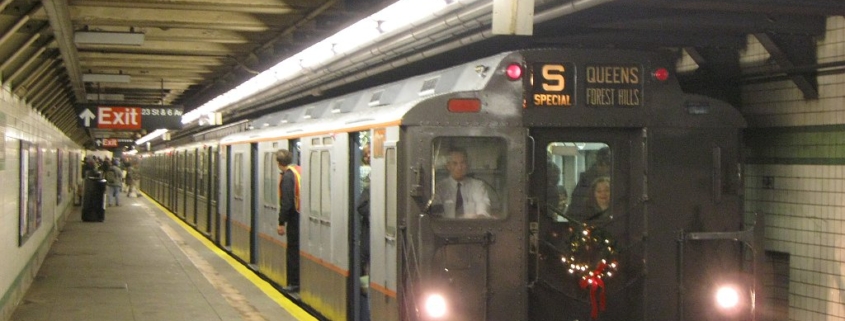How Density and Transit Relate to the Pandemic
Our main theme this week is the relationship between density, transit, and the pandemic:
- Wendell Cox at New Geography: Subways seeded the NYC epidemic: MIT economist
“It should go without saying that evaluation of the COVID-19 spread needs to be objective. This means that it needs to include all potentially factors, even the most “politically correct”, such as density — especially the exposure density from how we live, work and get around.The subways are an important part of this in New York City. As Harris notes, “We know that close contact in subways is fully consistent with the spread of coronavirus, either by inhalable droplets or residual fomites left on railings, pivoted grab handles, and those smooth, metallic, vertical poles that everyone shares.”
- Coronavirus has killed off public transportation across the Western world. Hat tip to Bill.
- Kotkin on density and the pandemic in NYC vs. other cities, and how the cities might change as a result, concluding:
“A city comes into being for the sake of life,” wrote Aristotle, “but exists for the sake of living well.” This should become the first principle of our next urban renaissance. Cramming poor people into tiny spaces, forcing them to ride crowded subways and taking away many upwardly mobile jobs, may work for luxury developers and those in search of kitchen help, but does not create the foundation for an urbanism that can thrive after the pandemic.”
- Wendell Cox at New Geography: “Exposure Density” and the Pandemic
“A commuter from a detached house in Westchester County to a job in Lower Manhattan’s financial district is likely to experience high exposure density. The trip, for the sake of discussion, includes a walk or car to the commuter rail station, a ride on commuter rail to Grand Central Station, a walk through corridors to reach the subway station, a ride on the subway train, exiting through a subway station for a walk to the high rise work location. At this point, the commuter joins others in a crowded elevator, and exit at the 40th floor, walking to an office shared with others.”
- The Antiplanner on crazy responses by the anti-car crowd to the pandemic-transit link
“Evidence is mounting evidence that urban transit has been one of the main spreaders of COVID-19. New York governor Andrew Cuomo says the virus can survive for days on transit seats and metal surfaces. The head of New York’s Metropolitan Transit Authority was infected by the virus and the head of New Jersey Transit actually died from it.
In the face of this evidence, anti-auto advocates have given up on their efforts to get people out of their cars and onto transit. As a Huffington Post headline reads, “The Coronavirus Pandemic Is Forcing Cities To Rethink Public Transportation.”
Just kidding. In fact, despite the headline, the story goes on to tell how anti-auto politicians are using the pandemic to somehow argue that more people should be discouraged from driving.”
This piece first appeared on Houston Strategies Blogspot.
Tory Gattis is a Founding Senior Fellow with the Center for Opportunity Urbanism and co-authored the original study with noted urbanist Joel Kotkin and others, creating a city philosophy around upward social mobility for all citizens as an alternative to the popular smart growth, new urbanism, and creative class movements. He is also an editor of the Houston Strategies blog.
Photo credit: AEMoreira042281 via Wikimedia under CC 3.0 License.



